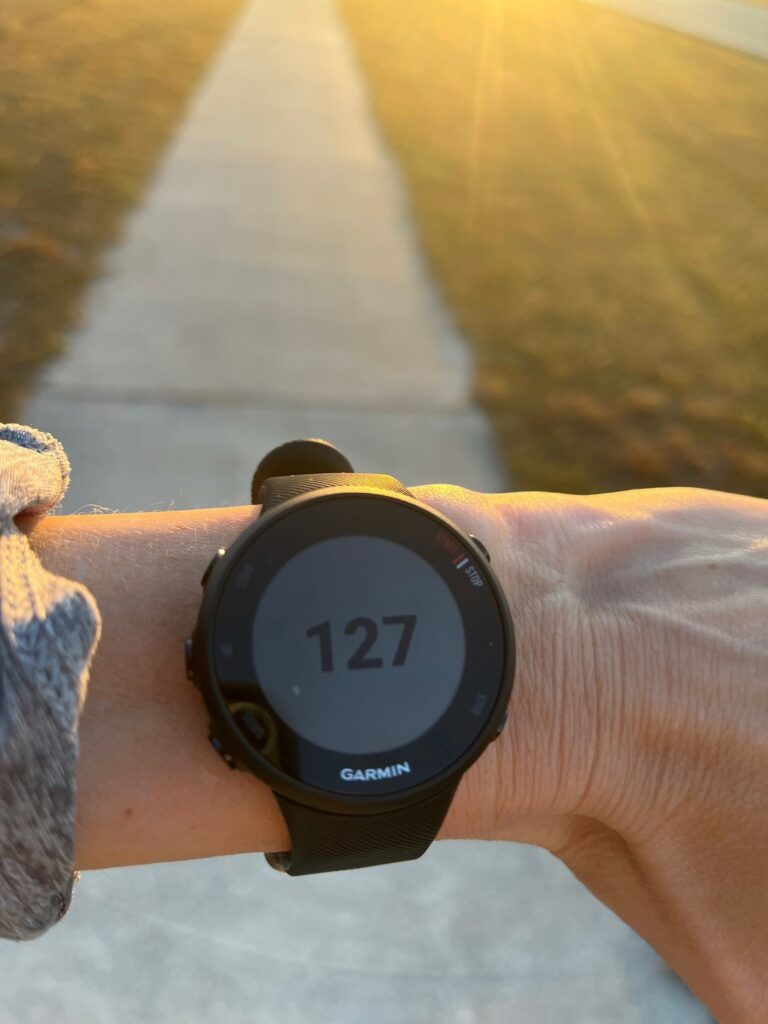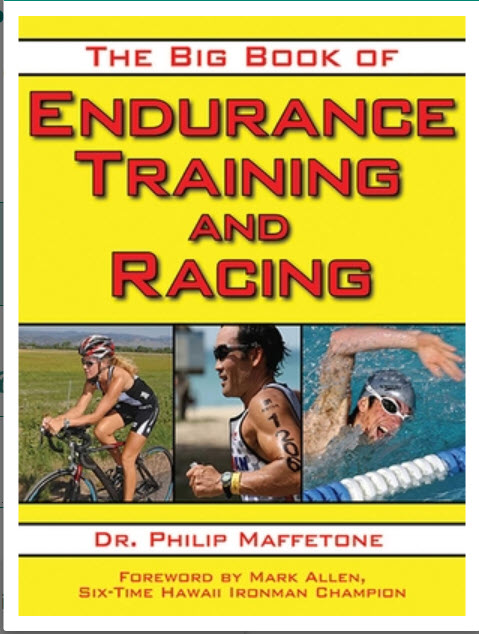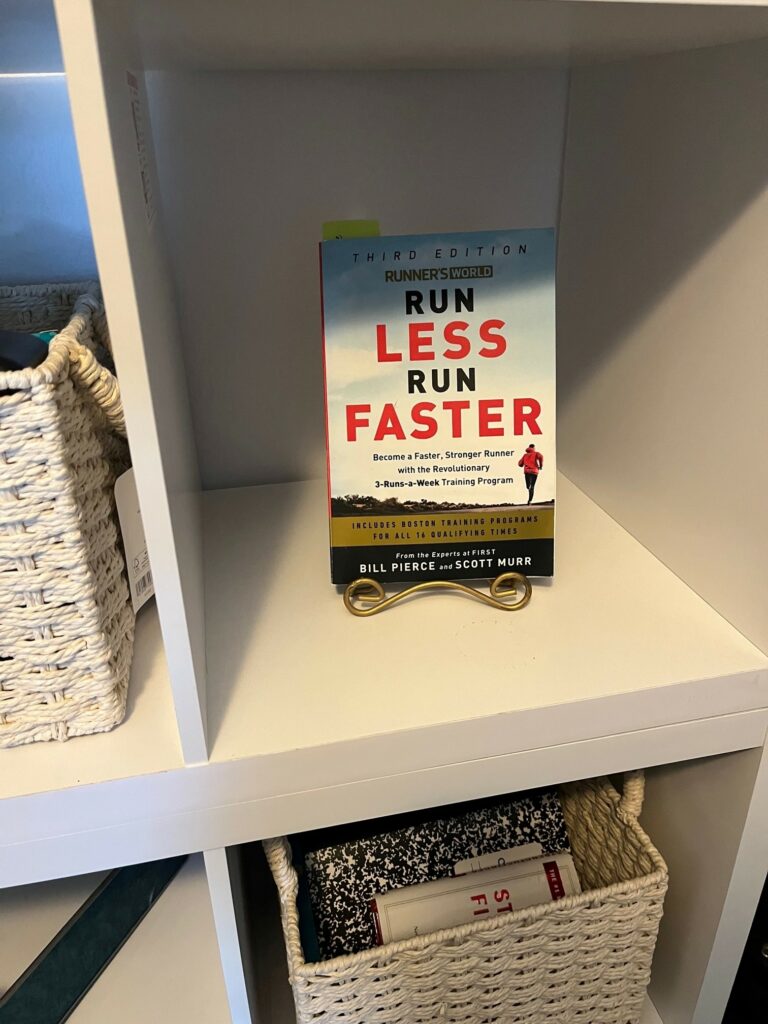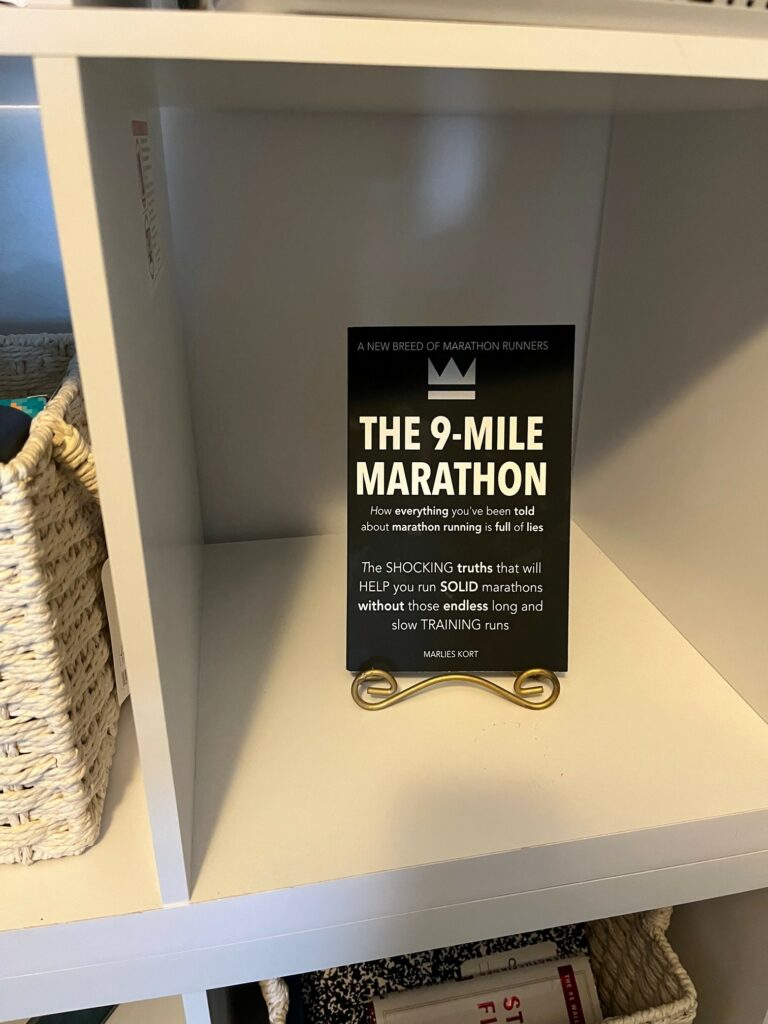
If you are wondering how to use your heart rate monitor for marathon training, there are two popular methods you will want to learn more about. I’ve tried both methods at separate times and found benefits in both, but one definitely works better for me.
In general, heart rate training can be used in preparing for a marathon by following either a low heart rate training strategy or a high heart rate training strategy. Both methods have been shown to be successful and have many supporters. While most plans focus on just one strategy, both methods may be used to varying degrees in many training programs.
There are two main schools of thought when it comes to heart rate training in a marathon training plan, high and low heart rate training. I have tried both and feel they each have their merit. Read on for more information on each strategy and what I’ve discovered when using each method.
Low heart rate training method

Low heart rate training is the backbone of a good aerobic engine which is needed for running a marathon. This type of training is characterized by most runs being done at or below 70% of your max heart rate. This is also frequently referred to as Zone 2 training but may depend on the heart rate zone plan you are using.
Low heart rate training is also referred to as the MAF Method (maximal aerobic function). The purpose of low intensity training is to improve aerobic function and build more aerobic endurance.
Most running coaches encouraging building a good aerobic base with low heart rate runs before starting a marathon plan. Training for a marathon puts quite a demand on the body and a good aerobic engine is important.
Everyone progresses at different rates and the process can be very frustrating. You should be able to run faster over time at the same heart rate. This improvement can take weeks or months depending on your current aerobic level, so you really need to be patient.
The Maffetone Method for low heart rate training

Dr. Phil Maffetone is one of the most famous proponents of this type of training. He developed a simple formula, called the 180 formula, to calculate the maximum training heart rate.
The formula works quite well for the majority of people to keep them training below 70-75% of their max heart rate. According to Dr Maffetone’s plan, almost all of your runs should be below the heart rate calculated below.
Dr. Maffetone’s target heart rate: 180 – Age
This is the max heart rate you should be running during the base aerobic phase for your runs. According to his plan, this target heart rate should not be exceeded in your low heart rate training.
This formula isn’t an exact science, but it does keep most people in the low intensity zone. You will need a lot of patience when following this plan, but many have been happy with the results.
Low Heart Rate Marathon training pros and cons
Pros
Most can train more consistently as they experience less injury. It does build a good aerobic base especially for those who may not have good aerobic function.
Many have found they can increase their training volume safely using this method. Over time many see their pace improve at the same heart rate which helps them to run faster without pushing too hard.
I’ve found that it also teaches you what an easy run really is. What you may think is an easy run is likely still at a moderate intensity level. Using a heart rate monitor to run below 70% of your max heart rate, you will know for sure what your easy runs should be like.
There are a lot of success stories where low heart rate training helped ones complete a first marathon. One of my favorite YouTubers on low heart rate training is Floris Gierhman. The below snapshot was from one of his videos after 10 years of this kind of training.

Cons
You will need to slow down considerably which means it will take a lot longer to run the same miles each week. This approach can get very frustrating as you may not have time to get the longer runs in during marathon training.
In addition, if you have poor running form, running longer even at a slower pace could increase your risk of injury. This was my experience the first time around with low heart rate training. I was a heel striker and increasing my volume led to hip pain leaving me unable to run for weeks.
I have since become a forefoot and midfoot runner and thus have had a better experience with low heart rate training. It is a long slow process to learn to run with the low heart rate method, but I do feel like I am a stronger runner.
I still run painfully slow with low heart rate training, so my long runs take FOREVER. Between my schedule and the summer heat, I don’t do low heart rate training for my long runs.
Higher heart rate training with less miles
At the other end of the spectrum, there are several popular plans with more training runs at a higher heart rate. These programs typically have the weekly long run and a tempo run at a heart rate around 80- 90% of your max heart rate.
Run Less Run Faster (FIRST) method

A popular book, “Run Less Run Faster” follows the FIRST 3plus2 method that is a higher intensity training plan. The program calls for three 3 targeted runs each week including a long run, tempo run, and speed training with 2 cross training sessions.
While the program is not a heart rate training program, the prescribed paces for each run correspond to higher heart rate training zone. The paces are calculated off of your current race times for 5K and tend to be very accurate.
I have been using this plan for my current marathon training and find most of the paces are in 80%-90% of my max heart rate. The faster runs are near the top of end of that zone and lower at the bottom.
The rationale for this type of training is that if you want to race faster, you need to train faster. It also emphasizes quality or quantity, intensity over frequency, and fast running over the accumulation of miles.
Having run a marathon last year with the slower paced lower heart rate, I ended up running my marathon only slightly faster than what I had trained at. This reinforced for me that if I want to run a faster marathon, I need to train my long runs at a more demanding pace.
A key component is that there are only 3 key runs because they are done at a higher intensity and heart rate. Cross-training and strength training are an important part of training in addition to the runs.
9-Mile Marathon program

Another popular plan is the 9-Mile Marathon plan by Marlies Kort. This plan relies heavily on the research done by Stans van der Poel and Marlies own success using this strategy.
This approach involves weekly medium long runs at a marathon heart rate pace. Similar to the FIRST method discussed above, it also only has 3 runs a week and strongly encourages strength training.
The program provides a chart of maximum marathon heart rates based on a max heart rate and a current 10K pace. This heart rate number is used for the two longer runs each week.
My marathon heart rate pace using the 9-Mile Marathon program equates closely to the running paces prescribed in the FIRST program from Run Less Run Faster. I have been running with the FIRST marathon training plan for a couple months now. Most of my long runs are very close to the “sweet spot” marathon heart rate calculated in 9-Mile Marathon plan.
While I am primarily using the FIRST plan I am using my marathon heart rate calculation from the 9-Mile plan for my long runs. The advantage of using the marathon heart rate pace is that I can’t cheat which I tend to do when left to relying on pace alone.
I’ve found it easy to over-estimate what my current abilities are and run faster paces than I should. My heart rate monitor gives me instant feedback and I’m able to dial it back. I recover faster when I keep my pace within a few beats of the marathon heart rate sweet spot.
High Heart Rate Marathon Training Pros and Cons
Pros
Running long runs at a marathon heart rate pace does prepare you mentally and physically for your race day pace. I’ve already experienced the truth that what you train for in your long runs, you will likely run on the big day.
This method has drastically reduced weekly mileage which is a big plus for busy people. For slower runners, the miles can really add a lot of hours or running each week in higher volume training plans. The lower mileage plans make completing a marathon a realistic and sustainable goal for me.
Using a heart rate monitor on the higher intensity run has helped keep me from overtraining and I recover faster. I know I would be running too hard if I were not paying attention to my heart rate especially in the later miles of my long run.
Cons
Running your long runs at a higher heart rate and pace can lead to injury, over-training, and burnout. It is also a lot harder in general than the low heart rate runs.
Recovery needs to be a key component of the weekly training to ensure you are rested enough. You will need very easy days after each high heart rate run. See my article here for more on using a heart rate monitor for recovery.
Strength training is also highly recommended for this type of training program. Most runners including myself tend to neglect strength training, but it is a key component for performance and injury prevention. See my article here for some helpful tips for busy runners.
If you prefer to run every day, this is probably not the best strategy for you.
Key Takeaways
Heart rate training is a great way to prepare for a marathon. Your heart rate provides objective feedback that can help you avoid injury and provide valuable information for making future adjustments. For more on heart rate monitors for beginners see my article here.
Keep in mind there is no one perfect training plan for everyone which is why both high and low heart rate training plans have been successful for many. The most important thing is finding the most ideal plan that will work for you and your current circumstances.